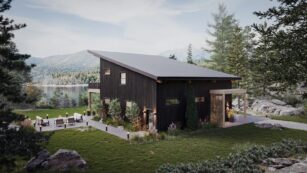
Every rush-hour ride on a quiet electric bus or a smooth light-rail train is the product of years of careful thought. Behind the scenes, engineers weigh hundreds of details, materials, energy use, passenger comfort, neighborhood impact, so that “going green” happens without commuters even noticing. This article peeks inside that decision-making process. It shows how Green Transit Projects evolve from bold ideas to everyday services that cut pollution, save money, and make city life better.
Why Green Transit Projects Matter Now
Cities are growing fast. So are traffic jams and tailpipe fumes. Traditional cars still pump out large amounts of carbon dioxide, particulates, and noise. Public transportation, when designed well, counters these problems by:
- Moving more people with less energy. A full tram can replace dozens of single-occupancy vehicles.
- Lowering greenhouse gases. Electric rail, battery buses, and hydrogen fuel cells draw power that can come from solar, wind, or other renewables.
- Freeing street space. When more riders choose rapid buses, sidewalks widen, cycling lanes fit in, and neighborhoods breathe.
Put simply, green transit is a health plan for both cities and the planet.
Three Pillars of Sustainable Design
Engineers tend to group their goals into three overlapping pillars:
- Environmental Protection
- Cut life-cycle emissions—from mining the steel to decommissioning the fleet.
- Use recycled or low-carbon construction materials.
- Capture and reuse braking energy.
- Economic Sense
- Deliver the best long-term value for taxpayers and operators.
- Design systems that last 30 – 50 years with minimal downtime.
- Phase projects so early wins fund later expansions.
- Social Well-Being
- Keep fares affordable.
- Ensure stations feel safe and are accessible to all ages and abilities.
- Protect cultural and historical sites during construction.
Any project that weakens one pillar risks losing public trust. Successful Green Transit Projects strengthen all three at once.
From Sketch to Street: Tools That Push Innovation
Modern design offices look nothing like the drafting rooms of old. Here are a few tools that help teams chase cleaner transit:
- Digital Twins
Engineers build a virtual copy of the railway or bus corridor. They adjust gradients, speeds, and passenger loads in real time to see how tiny tweaks affect energy demand. - Parametric Modeling
Software changes structures—say, a bridge pier or station roof—automatically as input values shift. This reduces waste during both design and construction. - Life-Cycle Assessment (LCA)
LCA calculators estimate carbon costs from cradle to grave. By comparing concrete mixes, track types, or battery chemistries, engineers choose the option with the smallest footprint. - Predictive Maintenance Sensors
Tiny Internet-of-Things devices track vibration, heat, and wear. Data helps crews fix parts before failure, extending asset life and slashing material waste.
Because these tools integrate across disciplines, civil, electrical, environmental, teams solve problems sooner and cut surprises on site.
Success Stories That Inspire
Real-world examples show what’s possible when innovation meets clear goals:
- Copenhagen’s Cycle Superhighways
Though not rail or bus, these 700 km of protected corridors prove that small investments can generate huge modal shifts. Commuter cycling has climbed past 45 %, trimming congestion and carbon alike. - Bogotá’s TransMilenio
The Colombian capital replaced chaotic mini-buses with swift, high-capacity trunk lines. Dedicated lanes, off-board ticketing, and platform-level boarding doubled passenger throughput while slashing particulate emissions by roughly 40 %. - Sydney Metro Northwest
Australia’s first fully automated rapid-transit line opened with regenerative braking, station solar panels, and recycled water for track cooling. Early reviews show 98 % on-time performance and strong rider satisfaction, setting the tone for future extensions.
These projects differ in scale and setting, yet share one thread: clear performance targets backed by flexible engineering.
Counting What Matters: Metrics and Trade-Offs
Numbers guide every major decision. Typical benchmarks include:
|
Metric |
Why It Matters |
Target Range* |
|
Energy use per passenger-km |
Direct gauge of efficiency |
0.05 – 0.25 kWh |
|
Annual CO₂ reduction |
Key climate indicator |
10 % over baseline |
|
Operating cost recovery |
Financial health |
> 80 % via fares/fees |
|
Accessibility score |
Social equity |
100 % step-free |
* Targets vary by mode and context.
Trade-offs are inevitable. A thicker insulated roof lowers heating bills but adds weight. Bigger batteries lengthen range yet boost purchase price. Engineers stage workshops with planners, residents, and economists to rank priorities, then adjust designs until the numbers, and the people, agree.
Local Angle: Building Trust in Jacksonville, Florida
When a coastal city remakes its transit grid, storm resilience and sea-level rise soar to the top of the checklist. In Jacksonville, Florida, planners recently explored how bus-rapid-transit lanes can double as evacuation routes during hurricanes.
They partnered with firms known for transportation engineering services that already understand the soil profiles, tidal patterns, and neighborhood concerns unique to the region. By mapping shade needs at stops and specifying corrosion-resistant materials, the project team aligned climate adaptation with commuter comfort, turning daily rides into a community insurance policy.
The Human Side: Skills Behind the Hardware
Technology alone does not move people. Skilled professionals do. Successful green transit teams nurture:
- Systems Thinkers who see how rail voltage, ticketing apps, and land-use rules intersect.
- Community Liaisons who translate engineering sketches into stories residents understand, in multiple languages.
- Adaptive Managers who pivot fast when a supply chain hiccup—or a pandemic—hits budgets or schedules.
- Data Analysts who wring insight from millions of sensor pings to plan smarter routes.
By blending technical depth with soft skills, these experts keep projects on track and public support intact.
Emerging Trends to Watch
Looking five to ten years ahead, several ideas move from pilot to mainstream:
- Green Hydrogen Fuel
Electrolyzers powered by surplus wind or solar create clean fuel for regional trains and long-haul coaches, trimming battery size where weight matters. - Battery-Swap Depots
Instead of long charging pauses, buses roll into a bay, swap packs robotically, and return to service in minutes. - Smart Catenary Systems
Overhead wires adjust voltage on the fly, sharing energy between accelerating and braking trains, much like a city-wide flywheel. - Rewilded Rights-of-Way
Corridors that double as wildlife crossings and rainwater buffers, cooling urban heat islands while hosting tracks or lanes. - Open-Source Control Software
To curb vendor lock-in, agencies co-develop code that any supplier can audit, improving security and lowering costs.
Investors and city councils increasingly back such breakthroughs because early pilots show solid returns in both dollars and public goodwill.
Conclusion: Innovation With a Purpose
Green Transit Projects succeed when technology and empathy travel together. Engineers juggle batteries, budgets, and bus lanes, yet never lose sight of the rider who simply wants a clean, quick, and safe trip home. By grounding big ideas in clear metrics, open dialogue, and respect for local context, they turn blueprints into better everyday journeys, and a healthier planet for all.













